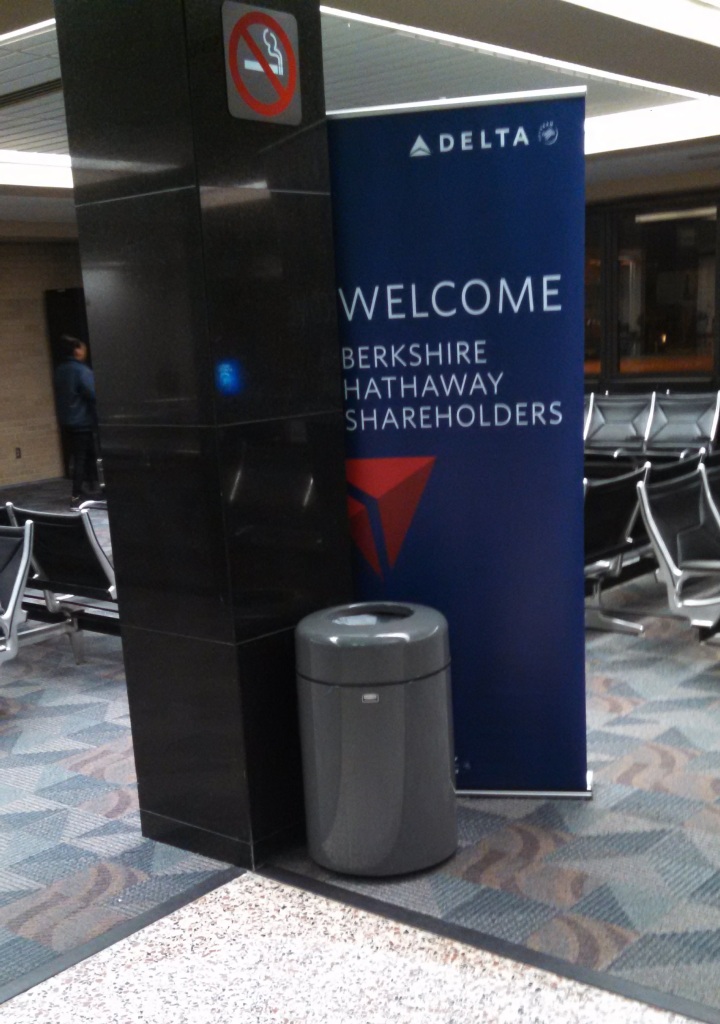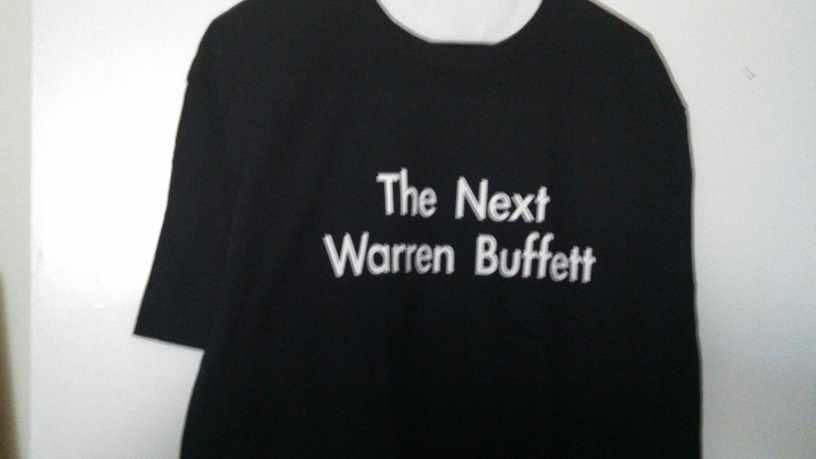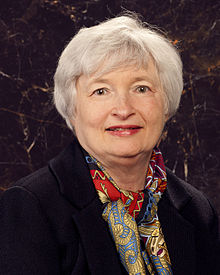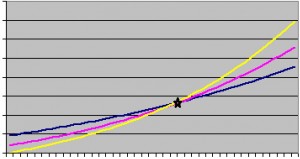Long-time readers will know that rural telecom companies have been a particular favorite of mine. Although these companies’ core residential landline business is in decline as mobile phones become the primary phone line among an ever-increasing proportion of the U.S. population, rural telephone companies can respond by lowering capital expenditures accordingly and refocusing their offerings to embrace broadband, comprehensive business services, and fiber optic television. As a result, they have frequently shown themselves to be capable of spinning off a great deal of free cash flow even as overall sales are declining. Furthermore, these companies tend to come with unusually high dividend yields, for people who care about that sort of thing.
As a group, though, rural telecoms have shown disappointing results in the first half of 2015. Perhaps this is to be expected; I first became interested in them in the first half of 2009, when stocks were depressed and interest rates had been recently cut to zero and were likely to remain there. But as of now, in June 2015, the market is at its highs and the Federal Reserve is totally definitely planning to probably raise interest rates any time now, just you wait. Rising interest rates can present a problem for these companies, as they tend to operate under heavy debt loads. Still, this pullback makes me wonder if some of the companies have dropped back into the zone of being attractively priced.
Frontier Communications presents an interesting challenge in this regard. It has recently entered a contract to purchase some of Verizon’s landline assets, which follows two other significant but smaller landline acquisitions from AT & T and Verizon in the last few years. This larger purchase was announced February of 2015 and is expected to close in the first half of 2016, pending regulator approval. The purchase will nearly double the size of Frontier’s balance sheet, and in order to pay for it, the company has issued a new series of preferred stock, as well as a block of common stock, and apparently intends to finance the balance through taking on a great deal of debt. For reasons I will discuss later, I think the preferred stock is where the action should be for prospective purchasers.
Although the new acquisition will no doubt fundamentally alter the earnings power of Frontier, I still think it is appropriate to look at the earning power of Frontier’s existing assets. For one reason, I generally assume as a first approximation that most acquisitions do no better than earn the cost of the capital used to make them, which per Damodaran’s Investment Fables: Exposing the Myths of “Can’t Miss” Investment Strategies might even be optimistic treatment. For another reason, based on what information Frontier has disclosed about this acquisition, I think this particular acquisition will, when viewed conservatively, do little more than pay for itself, as I shall explore later.
In 2014, Frontier’s sales were $4.77 billion and reported operating income was $820 million. Depreciation was $1.14 billion and capital expenditures, not including the cost of integrating the large purchase from AT & T this year, were $572 million, leaving $567 million in excess depreciation and an overall operating cash flow to the firm of $1.39 billion. Interest expense that year was $696 million, and taxes were $30 million, although based on Frontier’s reported income about $57 million would have been more typical. This works out to free cash flow to equity of $634 million, which is a yield of roughly 12.5% not counting the stock issued to pay for the acquisition.
I have chosen not to count the capital expenditures required to integrate the AT & T purchase and the pending Verizon purchase because first, they are presumably one-time expenses that do not have anything to do with Frontier’s ongoing earnings power, and second, logically speaking they should be considered part of the purchase price of the acquisition anyway.
In 2013, sales were $4.76 billion, reported operating income was $966 million (not counting the sale of a partnership interest (which was included in Frontier’s reported operating results despite not being operating). Depreciation was $1.17 billion and capital expenditures were $635 million, producing operating cash flow of $1.51 billion. Interest was $667 million and taxes were $47 million, producing free cash flow of $787 million. Much of the decline in free cash flows between 2013 and 2014 can be attributed to operating expenditures resulting from integration the AT & T purchase, although there is still a gap of about $50 million, which can be attributed to the low-to-mid single-digit percentage declines in Frontier’s customer base, which was masked by the acquisition itself.
In 2012, though, sales were $5.01 billion, reported operating income was $987 million, depreciation was $1.27 billion and capital expenditures were $748 million, producing operating cash flow of $1.51 billion again. Interest expense was $688 million and taxes were $76 million, resulting in free cash flow of $742 million.
The reported earnings for the first quarter of 2015 were apparently disappointing to the market. Sales were $1.37 billion as compared to $1.15 billion for the same quarter last year. Operating income was $163 million as compared to $226, and operating cash flow $334 million as compared to $380, not counting integration expenses. Interest expense was $245 million as compared to $171 million, and taxes were $-30 million as compared to $17 million, producing free cash flow of $119 million as compared to $192 million for the first quarter of 2014. However, integration operating expenses for Frontier’s various acquisitions were $57 million as compared to $11 million last quarter, and removing these expenses, net of taxes, would improve that $119 million to $156 million, which is broadly consistent with the free cash flow that Frontier generated over the full year 2014. So, the earnings may have been disappointing but they were hardly disastrous, and they still represent a free cash flow yield of 12.3%.
The pending Verizon acquisition, as I stated before, will roughly double the size of the company. The Verizon landline assets to be purchased cover 3.7 million voice connections, 2.2 million broadband subscriptions, and 1.2 million FiOS (fiber optic) television connections, while the pre-acquisition company has 3.5 million voice connections, 2.4 million broadband subscriptions, and 0.6 million FiOS subscribers. Although it would be nice if we could just double Frontier’s existing figures and go home, we have to consider the possibility the assets Frontier is purchasing may be of better or worse quality than Frontier’s assets in place, or that the alteration to the capital structure caused by this purchase changes the free cash flow situation, as indeed it does.
Our first clue is the purchase price. Frontier’s current assets have a value of roughly $14.5 billion, based on a market cap of roughly $5 billion and the $9.5 billion face value of Frontier’s long term debt. The purchase price of the Verizon assets is $10.5 billion, and Frontier is projecting an additional $450 million in integration capital and operating expenses. In other words, Frontier is acquiring 3.7 million new customers for $11 billion, while the market is currently estimating the value of its current 3.5 million customers at $14.5 billion.
Because this acquisition is of a portion of Verizon’s assets, not a standalone company, there are no audited financial statements and we are forced to rely on Frontier’s disclosures about the deal, which are naturally going to be self-serving.
At any rate, Frontier claims that the deal will improve free cash flow by 35% in the first year after the merger is completed. Frontier calculates free cash flow differently from how I do, because their figure for 2014 was $793 million rather than my $634 million, so 35% of that is $277 million or $222 million, depending on whose calculation you use. To this free cash flow to equity must be added about $675-775 million in additional interest payments on the $8.5 billion in debt Frontier will be taking on to finance this acquisition, producing a range of free cash flow to the firm (which is the amount of money the firm has available to distribute to all of its capital assets, whether in the form of interest, dividends/share repurchases, or undistributed earnings) of between $900 million and $1.05 billion, depending on whose estimates you use. The free cash flow to the firm to Frontier’s assets in place, recall, was about $1.4 billion for fiscal year 2014.
So, the purchased assets are projected to produce $1 billion in free cash flow to the firm for a purchase price of $11 billion (counting integration costs), while the existing assets produce a free cash flow to firm of about $1.4 billion for an enterprise value of $14.5 billion. In either case, then, the free cash flow yield is just a hair under 10%, so at least as a first approximation the assets purchased from Verizon seem to be of the same quality as Frontier’s existing assets.
As I said above, Frontier is intending to take on $8.5 billion in debt to purchase Verizon’s wireline assets, but on top of that the company has issued roughly $2 billion in equity, consisting largely of preferred stock but with some common stock added as well. For reasons I will go into, I believe the preferred stock is an attractive method to participate in Frontier, as compared to the common stock.
Preferred stock generally ranks alongside high yield bonds as a generally unattractive asset class, as it typically represents equity-like risk without the equity-like unlimited upside. This point has been hammered home in both Security Analysis and The Only Guide to Alternative Investments You’ll Ever Need. Preferred stock has the added disadvantage that, unlike with junk bonds, the company is at liberty to suspend its dividends without being forced into bankruptcy (although the company’s actual creditors will definitely take note).
Frontier’s preferred stock issue consists of $1.925 billion of preferred stock that pays a dividend of 11.125%. This preferred stock trades under the symbol FTRPR and is currently priced at just above its face value of $100 per share.
These preferred shares have the typical features of preferred stock, meaning that the dividend is cumulative, i.e. if Frontier declines to pay a dividend on the preferred stock it is theoretically required to make it up in subsequent quarters, and that unless the dividends on the preferred stock are current, the common stock will not receive a dividend either. Since Frontier’s management is aware that most people invest in it for its 8% dividend yield, it is equally aware that missing a preferred dividend would be shooting itself in the foot. However, Frontier disturbingly reserves the right to pay the dividend in common shares rather than in cash, and this action would not cut off the right to dividends on the common stock. However, paying a dividend in common shares would also probably be a sign of weakness that Frontier’s management would be reluctant to make lightly. But, if they do, look out below.
The key provision that separates this preferred stock from the vanilla preferred stock, though, is the mandatory conversion privilege. At the end of June of 2018, this preferred stock will automatically convert to common shares of Frontier at a rate depending on Frontier’s common stock price at the time. If Frontier is at $5 or below, each $100 preferred share will convert into 20 shares of common stock. If Frontier is between $5 and $5.875, each preferred share will convert into a number of shares equal to $100 divided by the share price. And if Frontier is above $5.875, the preferred shares will convert into 17.01213 common shares (equal to 100/5.875) no matter how high the price is. Thus, the holders of these preferred shares are allowed to participate in the upside of the common shares under certain circumstances. As of Wednesday, June 2015, the time of this writing, Frontier is at $5.065.
In order to properly evaluate this preferred stock, then, it would be helpful to look at option theory, because the holder of these preferred stock is essentially short a $5 put and long a $5.875 call that expire at the end of June, 2018. In between those two points the exposure to the price of the common stock is purely linear. In order to evaluate these options I will be using the Black-Scholes, not because it produces necessarily accurate results (in fact, its results almost never even match the market prices of different options on the same stock), but because its defects are well-understood by options traders, who can react accordingly, as stated wisely in Nassim Taleb’s Dynamic Hedging: Managing Vanilla and Exotic Options
As a starting point, the January 2016 $5 put has a market price of 62.5 cents, and the January 2016 $6 call has a price of 20 cents. Using my Black-Scholes calculator on Excel (which works essentially like everyone else’s Black-Scholes calculator on Excel, so I needn’t go into detail), I find that changing the strike price of to $5.875 produces an implied value of 23 cents. Then, extending the options’ lifespan to the end of June 2018, I get a value of $1.33 for the put and 93.6 cents for the call. Furthermore, the delta of the put is -.3856 and the call is .5181, which will come up later.
As an aside about my methods, the price one uses in the Black-Scholes model should technically be the forward price, i.e. the expected price stock will have at expiration. Normally, this technicality is ignored, since the forward price is simply the current price compounded at the risk-free rate and adjusted for expected dividends, and at typical interest rates in Western countries and for typical option lifespans, the difference between the forward and the current price is negligible.
However, when looking three years into the future, the price of a stock is going to be dominated by earnings and cash flows, not risk-free compounding and dividends. Although Frontier is likely to pay out its 8% dividends for three years, it is also likely to make the capital investments necessary to maintain its earnings power to produce the money that pays the dividends . Therefore, assume for purposes of these calculations that the best guess for the forward price of Frontier is the current price of Frontier, without adjusting for dividends. There are other reasons for making this assumption that I will speak of later.
Returning to the value of the preferred stock, the above options prices are based on a 100-share contract, but the preferred stock converts into 20 shares at $5 or below and 17.02 shares at 5.85 or above. Thus, each share of preferred stock is short $26.6 worth of puts and long $15.92 worth of calls. This further implies that the value of the preferred stock without these two options would be $110.68 ($100 + $26.6 – $15.92) and offer a dividend yield of 10.16%.
The reason I calculated the deltas above is to determine how closely the preferred stock will track the price movements of the common stock. The dollar delta of the short put is $7.73, and for the long call it is $8.82, total $16.55. In other words, at the current price if the common stock moves up by $1, each $100 share of the preferred stock would be expected to appreciate by $16.55 as a result of these options. At current prices, $100 of common stock is 19.74 shares, so if it appreciates by $1 the gain would be simply $19.74. So at this moment, despite the fact that any appreciation of the common stock before $5.875 a share is not reflected in the conversion amount, the preferred still captures 83.8% of the price movements of the common stock.
As I said, I have other reasons for assuming that the future price of Frontier is likely to be its current price. The first one is that this asset purchase is not likely to increase the value of Frontier’s existing equity in the short term. I calculated above that based on Frontier’s own disclosures the conservative estimate of increased free cash flows to equity is $222 million in the first year. However, the company has issued $1.925 billion in preferred stock at 11.125%, and the dividends required on that amount are $214 million, and the $80 million or so in common stock, bearing a dividend yield of roughly 8%, will suck up the rest. It is true that Frontier is projecting an additional $175 million in annual synergies by the third year after the merger, i.e. 2019, but the company is more likely to use that additional money to pay down its substantially increased debt load, rather than let it flow to shareholders. Also, as Damodaran concludes from examining many studies in his Investment Fables, synergy is difficult to count on anyway.
The second reason the future price is likely to stay between the two option prices is because of the dilutive effects of the conversion itself. Unlike ordinary options, which are basically side bets that don’t affect the performance of the underlying stock, these preferred shares, when converted, will become additional shares of the common stock, and since there are about $2 billion in preferred shares and $5.1 billion in common shares, the effect of converting at a favorable or unfavorable level will be significant. If the shares are significantly below $5 at the time of conversion, the common shares will have received $2 billion in financing for a price significantly below $2 billion in common shares, but if the price is significantly above $5.875, the preferred shareholders will receive much more than $2 billion for their equity purchase. As a result, it is easy to see that the price will have a much harder time moving beyond $5 or $5.875, because each such move will produce negative feedback from the dilution effect.
And that is the key provision, in my view, that makes the preferred shares a superior bet to the common. As stated above, at current share prices the preferred shares are projected to gain 183.8% of the common price movements anyway (although it is the nature of options that this is unstable and will require recalculating as time passes or the price of the common stock moves).
Furthermore, because they have a mandatory conversion, their upside is also going to be subject to the braking force the common stock will receive to the upside. Therefore, the income-oriented investors who tend to follow rural telecoms in the first place would be better off having the preferred stock, which has a higher dividend yield and largely similar price behavior properties. Also, because the common shares of Frontier are currently at the bottom end of their likely price range, and the preferred are expected to gain roughly 183.8% of the current price movements (at least at the current price range; that percentage will likely decline as the price rises), the preferred shares are actually more responsive than the common shares to Frontier’s upside at current prices.
So, there are three reasons why I think the price of Frontier is likely to stay flat over the foreseeable future. The first is because the Verizon acquisition seems to be for assets of no better quality than the existing Frontier assets. The second is that if the assets prove to be of better quality due to synergy, the cash flows resulting from that synergy will go to pay down debt, not to the equity holders directly. The third is because the structure of the preferred stock enforces a price range for the common shares of $5 to $5.875, which Frontier is at the low end of, and any upward movement in the common stock at these prices will help the preferred stock more than the common. Therefore, those investors who are considering going long in Frontier would probably be better off with the higher-yielding preferred shares.








